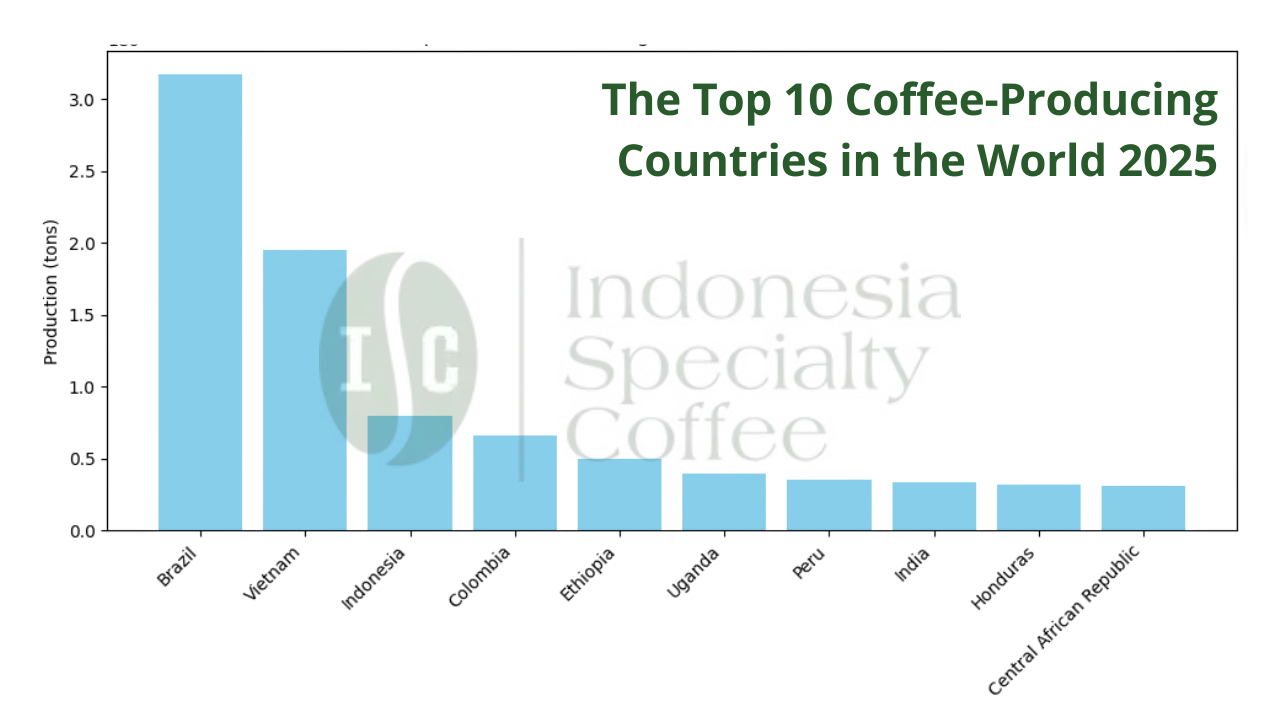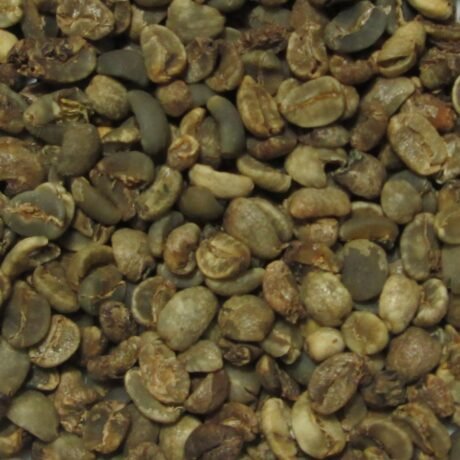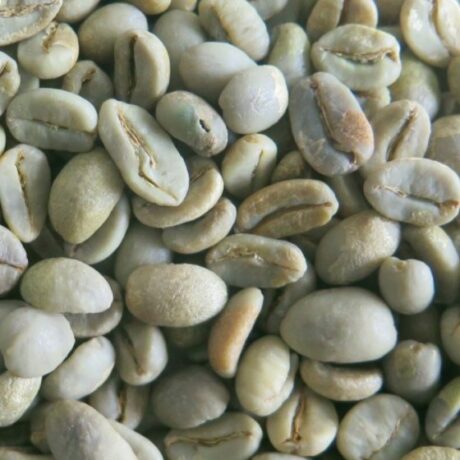Coffee remains one of the world’s most beloved and widely consumed beverages, deeply embedded in cultures and economies globally. In 2025, coffee production continues to be a vital industry, supporting millions of livelihoods and fueling international trade amid evolving climate challenges and rising demand for sustainable, specialty beans.
This article dives into the top 10 coffee-producing countries in 2025, highlighting their production volumes, market shares, and contributions to the global coffee landscape. I mentioned the countries coffee association as a bonus knowledge!
References: https://worldostats.com/
1. Brazil
Production Amount: 3.1M tonnes
Brazil solidifies its reign as the world’s coffee titan in 2025, producing over 3.1 million tonnes annually. Renowned for its premium Arabica beans, Brazil’s coffee thrives in regions like Minas Gerais, bolstered by ideal climates and advanced farming techniques.
The Brazilian Coffee Institute (ICAFÉ) drives innovation, ensuring sustainability and quality as demand for traceable, eco-friendly coffee grows. With Arabica’s smooth, mild flavors dominating, Brazil’s output meets both mass-market and specialty needs.
2. Vietnam
Production Amount: 1.9M tonnes
Vietnam’s coffee dominance continues in 2025, with 1.9 million tonnes of robusta beans cementing its status as a global leader. The Central Highlands, especially Dak Lak province, fuel this growth, leveraging robusta’s resilience to climate shifts.
Beyond instant coffee, Vietnam’s specialty robusta scene is booming, supported by government initiatives to enhance yields and quality, positioning it as a key player in the evolving coffee market.
3. Indonesia
Production Amount: 794K tonnes
Indonesia is another Asian nation making its mark in the global coffee industry. Sumatra and Java are two of the most well-known coffee-producing regions in Indonesia. The country predominantly cultivates robusta beans, known for their strong, bold flavors. Indonesia’s unique coffee processing method, known as “wet-hulling” or “giling basah,” gives its coffee a distinct earthy and spicy taste. The Indonesian Coffee and Cocoa Research Institute (ICCRI) plays a key role in supporting coffee production and quality improvement.
4. Colombia
Production Amount: 665K tonnes
Colombia’s 665,000 tonnes in 2025 underscore its reputation for top-tier Arabica. Grown in the Andes’ volcanic soils, Colombian coffee boasts bright acidity and balanced flavors. The Colombian Coffee Growers Federation (FNC) embraces 2025’s tech trends—like precision farming—to sustain quality amid climate pressures, keeping smallholder farms competitive in the specialty coffee surge.
5. Ethiopia
Production Amount: 496K tonnes
Ethiopia, coffee’s ancestral home, produces 496,000 tonnes of Arabica in 2025. Its diverse flavors—floral, fruity, or spicy—shine through smallholder efforts in regions like Yirgacheffe. The Ethiopian Coffee and Tea Authority (ECTA) champions sustainability and fair trade, aligning with 2025’s ethical consumption trends, ensuring Ethiopia’s legacy thrives in a modern market.
6. Uganda
Production Amount: 393K tonnes
Uganda’s 393,000 tonnes in 2025 highlight its robusta prowess in East Africa. A vital cash crop for smallholders, Ugandan coffee benefits from the Uganda Coffee Development Authority (UCDA), which promotes climate-smart farming and quality standards. As global robusta demand rises, Uganda’s bold flavors strengthen its foothold in 2025’s coffee trade.
7. Peru
Production Amount: 352K tonnes
Peru’s coffee output reaches 352,000 tonnes in 2025, with Arabica’s floral brightness gaining traction. Grown in the Andes, Peruvian coffee reflects sustainable efforts led by the National Coffee Board (JNC). As eco-conscious consumers drive demand, Peru’s focus on organic and fair-trade beans positions it as a rising star in the specialty market.
8. India
Production Amount: 338K tonnes
India’s 338,000 tonnes in 2025 showcase its blend of Arabica and Robusta from Karnataka, Kerala, and Tamil Nadu. Known for rich aromas, Indian coffee adapts to 2025’s health trends with alternative milk pairings. The Coffee Board of India boosts smallholders and estates, balancing tradition with innovation to meet global specialty demand.
9. Honduras
Production Amount: 315K tonnes
Honduras produces 315,000 tonnes in 2025, a Central American leader in Arabica. Its bright, balanced beans thrive through smallholder and estate collaboration, supported by the Honduran Coffee Institute (IHCAFE). Embracing 2025’s tech advancements, Honduras enhances traceability and sustainability, appealing to discerning coffee drinkers worldwide.
10. Central African Republic (CAR’s)
Production Amount: 306k tonnes
The Central African Republic rounds out the list with 306,000 tonnes in 2025, leaning on robusta’s bold, earthy profile. Smallholder-driven, the industry grows with local agricultural support, overcoming challenges to tap into Africa’s rising coffee potential. In 2025, its focus on resilience keeps it competitive globally.
The 2025 Coffee Landscape
In 2025, these top 10 countries shape a dynamic coffee industry, blending tradition with innovation. From Brazil’s massive output to the Central African Republic’s emerging role, each nation offers unique flavors reflecting their terroir and dedication. As sustainability, technology, and specialty coffee define the era, coffee lovers have more reasons than ever to explore this evolving world.
—
Interested in Indonesia coffee beans? Call us on WhatsApp anytime at +62 811 6380 606 or email info@specialtycoffee.id to buy the coffee!




